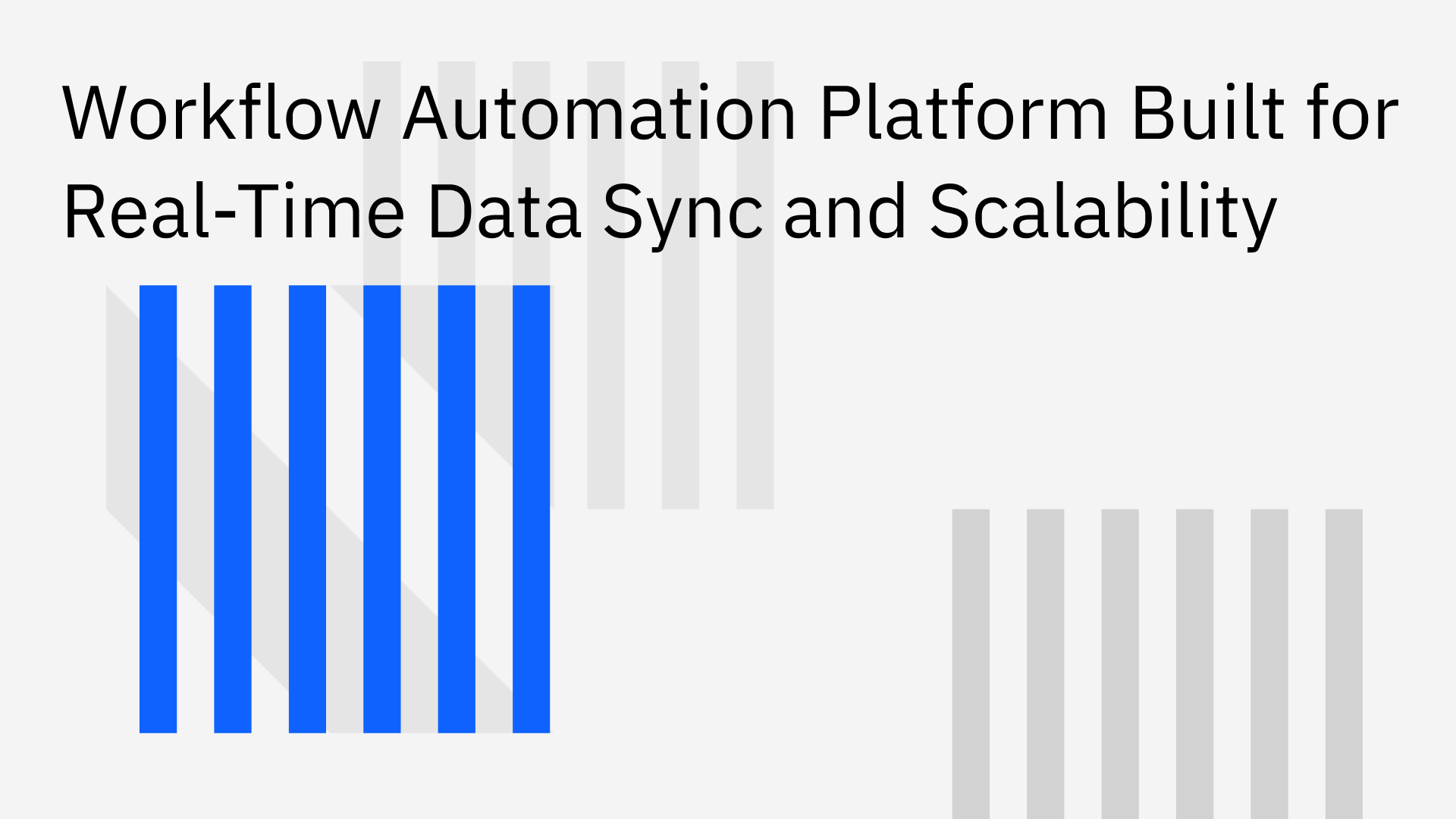Workflow automation is essential for modern enterprises aiming to streamline business processes, boost productivity, and reduce human error in repetitive tasks. By automating sequences of work, organizations free up technical teams to focus on higher-value strategic projects instead of operational overhead.
However, the effectiveness of any workflow automation platform is fundamentally limited by the quality and timeliness of the data it operates on.
The Foundational Data Problem in Workflow Automation
The promise of workflow automation is to create seamless, reliable processes that span multiple business systems—CRMs, ERPs, and databases. Yet, many platforms fall short due to underlying data synchronization challenges:
- High Latency: Many tools use periodic polling or batch processing, triggering workflows minutes or hours after a business event occurs. This delay is unacceptable for operational use cases like customer onboarding or order fulfillment, where real-time action is essential.
- One-Way Data Flow: Automation is often triggered by simple, one-way webhooks. While a webhook can signal an event, it doesn’t guarantee that the destination system has a complete or consistent view of the data. The workflow may need to make multiple API calls to fetch related data, introducing points of failure and potential race conditions.
- Data Silos and Inconsistency: Without true bi-directional synchronization, data across systems drifts over time. A customer record updated in the CRM may not match the billing system, leading to critical errors such as incorrect invoicing or failed service provisioning.
These limitations create brittle, unreliable automations that require constant monitoring and manual intervention—undermining the purpose of workflow automation.
Core Requirements for a Modern Automation Platform
To build robust, scalable, and truly autonomous workflows, a platform must be engineered with a data-first approach. The essential requirements are:
Real-Time, Bi-Directional Data Synchronization
- The cornerstone of effective automation is data consistency.
- A modern platform must provide true bi-directional synchronization, ensuring that changes in any connected system are instantly and reliably propagated to all others.
- This eliminates data silos and ensures every workflow operates on a single, consistent version of the truth.
- This is fundamentally different from running two separate one-way syncs, which cannot resolve conflicts and often lead to data corruption.
Low-Latency Event Processing
- Speed is critical for operational workflows.
- Automation must be event-driven, not schedule-based.
- The platform must be capable of sub-second latency, capturing changes at the source and making that data available to the workflow engine almost instantly.
Enterprise-Grade Reliability and Scalability
- As businesses grow, so do their data volume and workflow complexity.
- The platform must scale without performance degradation or increased failure rates.
- Built-in error handling, conflict resolution, and guaranteed data delivery are essential to prevent silent failures and data corruption.
- The architecture should handle millions of records and transactions without manual oversight.
Stacksync: A Platform Architected for Data-First Automation
Addressing these challenges requires a platform where real-time, bi-directional data synchronization is a core principle. Stacksync is engineered to provide this resilient data foundation, ensuring that data across all operational systems—CRMs like Salesforce, ERPs like NetSuite, and databases like PostgreSQL and Snowflake—is perpetually and reliably in sync.
By solving the underlying data consistency problem, Stacksync enables the creation of workflows that are inherently more reliable, powerful, and scalable. Unlike generic iPaaS solutions that simply bolt on triggers to disparate systems, Stacksync creates a unified data fabric. Workflows are built on this fabric, guaranteeing they always operate on accurate, real-time data.
Example Workflow:
- With a traditional tool, a webhook from Salesforce might trigger the workflow, requiring separate API calls to fetch account, contact, and product details. If the ERP sync is lagging, the workflow might fail or use outdated information.
- With Stacksync, bi-directional, real-time sync between Salesforce, your database, and your ERP is already active. The moment the opportunity is updated, the change is reflected consistently across all systems. The workflow is triggered from a unified, reliable data state, eliminating race conditions and ensuring every step executes correctly.
This architectural difference is what separates simple task automation from true, enterprise-grade workflow automation.
Building Scalable and Resilient Workflows
The primary benefit of a data-sync-first approach is the ability to build automations that are both simple and resilient:
- Data consistency is guaranteed by the platform, so workflows don’t need complex logic for validation, reconciliation, or multi-system error handling.
- Engineering teams can focus on business logic, not the complexities of data integration.
- Stacksync is designed for scale, handling millions of records and high-throughput events, with enterprise-ready security and compliance (SOC 2 Type II, GDPR, HIPAA).
- As your business grows, automated workflows scale seamlessly without becoming a source of technical debt.
Ultimately, the value of a workflow automation platform is measured by its reliability. By prioritizing real-time, bi-directional data synchronization, Stacksync provides the robust foundation needed to build and scale the complex, mission-critical automations that drive modern business operations.
